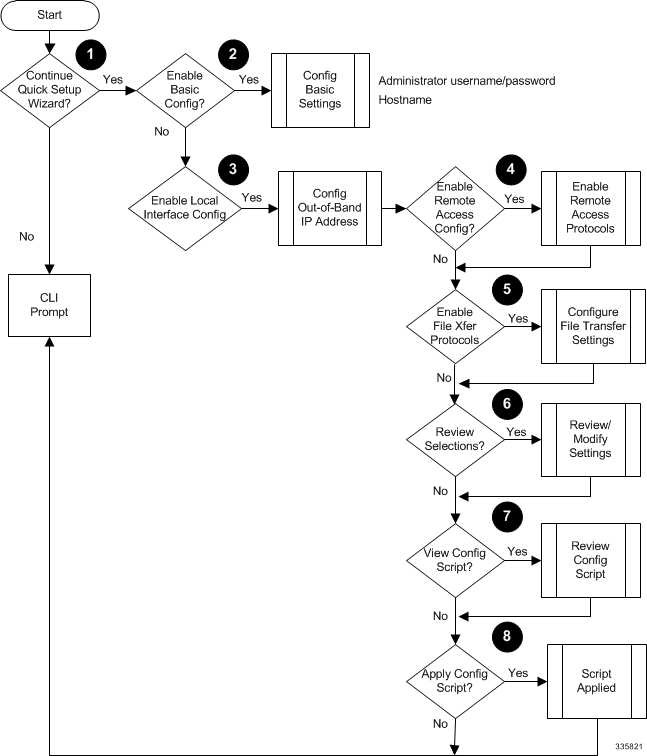|
1
|
Enter or exit the wizard.
|
Enter no at the prompt to automatically be directed to the command line interface (CLI). Proceed toUsing the StarOS CLI for Initial Configuration
for instructions on performing an initial system configuration with the CLI.
|
|
Enter setup at the command prompt to re-invoke the wizard.
|
|
2
|
For release 19.2 and higher, configure a tech-support password.
|
The tech-support password is used to access cli test-commands.
|
|
Configure an administrative username/password and the a hostname for the system.
|
The name of the default administrative user configured through the wizard is admin.
|
|
Administrative user name is an alphanumeric string of 1 through 32 characters that is case sensitive.
|
|
Administrative user password is an alphanumeric string of 1 through 63 characters that is case sensitive. For release 21.0 and later, you can enter 127 characters for the password.
|
|
Configure a valid, non-null hostname. The hostname is an alphanumeric string of 1 through 63 characters that is case sensitive.
|
|
3
|
Configure a single out-of-band management interface for the system.
|
Traffic on the management LAN is not transferred over the same media as user data and control signaling.
|
|
For security reasons, it is recommended that management functions be maintained on a separate network from user data and control
signaling.
|
|
Configure an IP address, subnet mask, and gateway for the interface.
|
|
4
|
Enable the remote access protocol for accessing the system.
|
Secure Shell (SSH) uses TCP port number 22 by default, if enabled.
SSH V1 and/or V2 are supported.
For maximum security, use only SSH v2.
|
|
5
|
Enable file transfer protocols for copying files to/from the system.
|
If SSH is enabled, you can also enable SSH File Transfer Protocol (SFTP) server functionality.
Telnet uses TCP port number 23 by default, if enabled.
The File Transfer Protocol (FTP) uses TCP port number 21 by default, if enabled.
|
|
6
|
Review and/or modify the configuration of previous prompts.
|
-
Enter the number of the prompt to be modified.
-
Configure the parameter.
-
Optional. Repeat step 1 and step 2 to modify additional settings.
-
Enter "done" when you have completed all changes.
|
|
7
|
Review the configure script created by the wizard based on your inputs.
|
A sample of a created script is displayed in the example below. Variables are displayed in italics (variable).
|
|
8
|
Apply the configuration file to the system.
|
Once applied, the parameter configuration is automatically saved to the system.cfg file stored in /flash memory.
|


 Feedback
Feedback